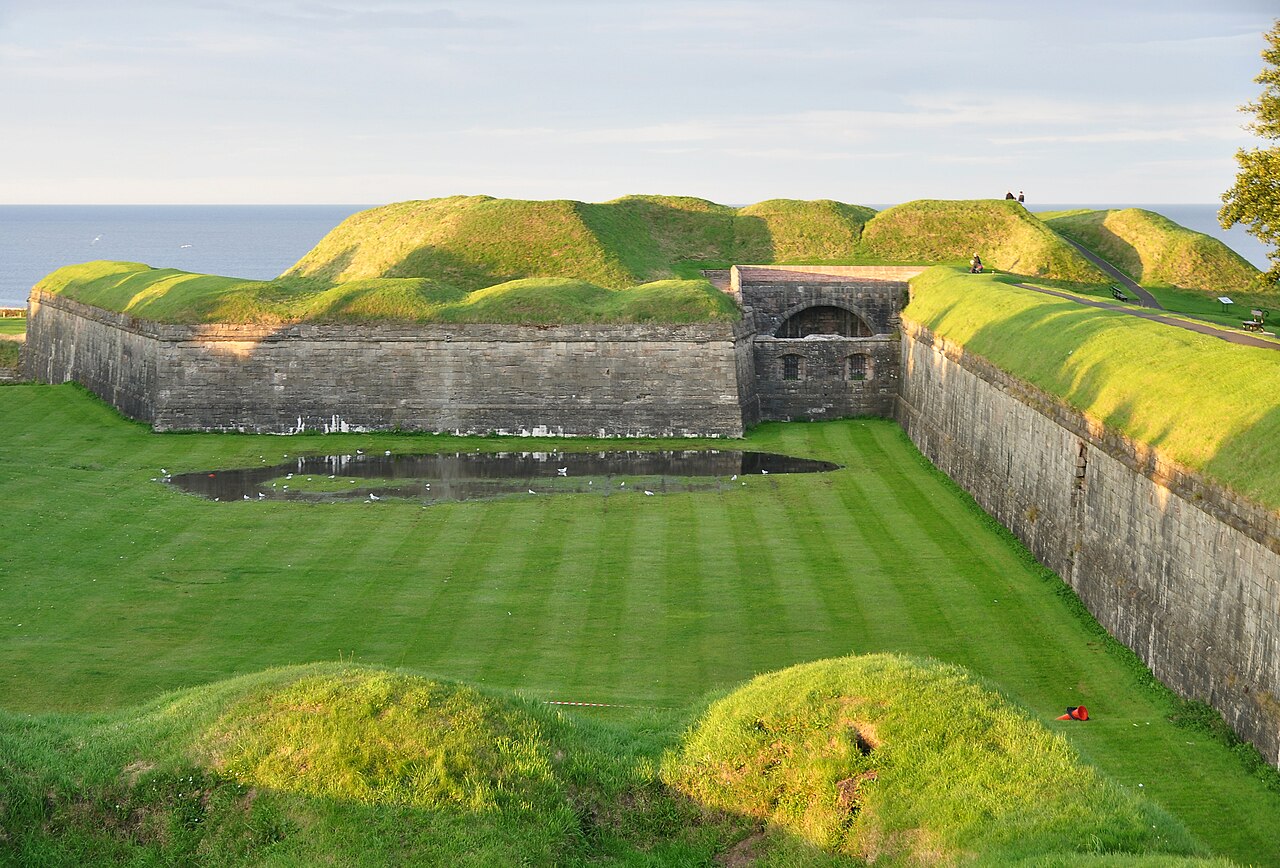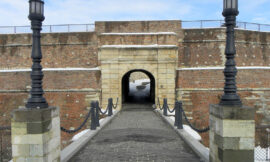The Elizabethan Town Walls of Berwick-upon-Tweed are an outstanding example of 16th-century military architecture. Constructed during the reign of Queen Elizabeth I, these fortifications were designed to protect the town from potential Scottish invasions and to reinforce English control over this strategically important border town. The walls are among the most complete and well-preserved examples of Elizabethan military defenses in the United Kingdom, showcasing innovative design features of the period.
Historical Background
Context and Motivation:
- Anglo-Scottish Relations: During the 16th century, the relationship between England and Scotland was fraught with tension and conflict. Berwick-upon-Tweed, located on the border, was a key strategic and military site, often caught in the crossfire of these hostilities.
- Elizabeth I’s Reign: When Elizabeth I ascended to the throne in 1558, the need to secure the northern border became a priority. The construction of new, modern fortifications at Berwick was part of a broader effort to reinforce England’s defenses.
Construction:
- Timeline: The construction of the Elizabethan Town Walls began in 1558 and was largely completed by 1569.
- Architects and Engineers: The project was overseen by prominent military engineers, including Sir Richard Lee, who played a significant role in designing the fortifications.
Design and Structure
Bastioned Fortifications:
- Innovative Design: The Elizabethan Town Walls are a prime example of bastioned fortifications, a design that originated in Italy and spread across Europe. This style was revolutionary for its time, providing enhanced defensive capabilities against artillery.
- Bastions: The walls feature several large, angular bastions, including Brass Bastion, Windmill Bastion, and King’s Mount. These bastions project outward from the main wall, allowing defenders to cover all approaches with overlapping fields of fire, eliminating blind spots and making it difficult for attackers to approach without being exposed to defensive fire.
Curtain Walls:
- Robust Construction: The curtain walls connecting the bastions are thick and robust, built to withstand bombardment and provide a formidable barrier. The walls are approximately 4 meters (13 feet) thick in some places and built using local stone.
- Parapets and Walkways: The top of the walls features parapets with walkways behind them, allowing soldiers to move quickly between positions and maintain a continuous defensive line.
Additional Defensive Features:
- Ditches and Earthworks: Deep ditches were dug in front of the walls, adding an extra layer of defense by making it more difficult for siege engines and infantry to reach the walls. These ditches could be flooded to create moats in some areas.
- Gates and Entrances: The town walls included several fortified gates, such as Cowport Gate and Scotsgate, which controlled access to the town. These gates were heavily defended with portcullises and drawbridges.
Historical Significance
Military Importance:
- Defensive Stronghold: The Elizabethan Town Walls made Berwick-upon-Tweed one of the most well-defended towns in England. Their construction marked a significant improvement in the town’s defenses, making it a formidable obstacle to any potential Scottish invasion.
- Technological Advancement: The walls represent a significant advancement in military architecture, incorporating the latest innovations in fortification design of the time. The use of bastions and other features reflected contemporary understanding of artillery warfare and defensive strategy.
Cultural Impact:
- Symbol of Power: The construction of such elaborate defenses was a clear statement of Elizabethan England’s power and determination to protect its borders. The walls symbolized the strength and resilience of the town and its importance to the English crown.
- Historical Events: Over the centuries, the walls have witnessed numerous historical events, including conflicts, sieges, and changes in control between England and Scotland.
Modern Relevance
Preservation and Tourism:
- Heritage Site: Today, the Elizabethan Town Walls are a protected heritage site, recognized for their historical and architectural significance. Preservation efforts have ensured that the walls remain largely intact and accessible to the public.
- Tourist Attraction: The walls are a major tourist attraction, drawing visitors from around the world who come to explore their history and enjoy the panoramic views of the surrounding landscape. Guided tours and interpretive displays provide educational insights into the history and construction of the walls.
Community Identity:
- Local Landmark: For the residents of Berwick-upon-Tweed, the town walls are a cherished local landmark and a symbol of their town’s rich history and strategic importance. They play a central role in the town’s identity and heritage.
- Cultural Events: The walls serve as a backdrop for various cultural events and festivals, further embedding them in the social and cultural life of the town.
Conclusion
The Elizabethan Town Walls of Berwick-upon-Tweed are a remarkable example of 16th-century military engineering and a testament to the strategic importance of the town during a tumultuous period in Anglo-Scottish relations. Their innovative design, incorporating bastions and robust defensive features, made them a formidable defensive structure. Today, the walls stand as a well-preserved historical monument, offering insights into the past and serving as a major attraction for visitors and a source of pride for the local community. Their preservation ensures that future generations can appreciate and learn from this significant piece of military and architectural history.



